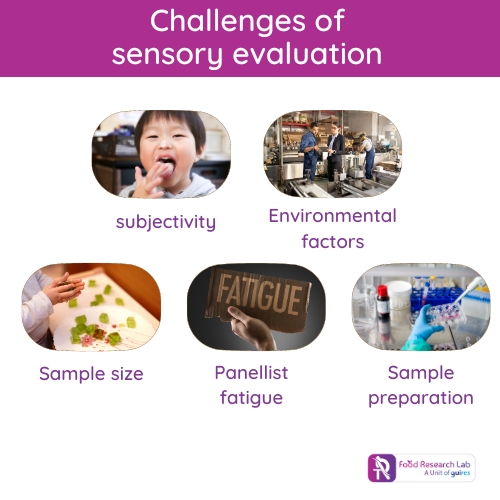
Challenges faced while carrying out the sensory evaluation of food
What is sensory evaluation?
Sensory evaluation is the process of using our senses to assess the characteristics of food products, such as their taste, aroma, texture, appearance, and overall acceptability. Sometimes even hearing may be involved while testing a food product. For instance, if a crispy product like chips is not heard while biting and chewing, it is unlikely to be interpreted as a crispy product. It is an essential step in sensory and consumer science research, product development, shelf-life studies and quality control for the food industry carried out by a team of panellists.
The Sensory Division of the Institute of Food Technologies defines sensory evaluation as “A scientific discipline used to evoke, measure, analyse, and interpret reactions to those characteristics of foods and materials as they are perceived by the senses of sight, smell, taste, touch, and hearing.” Other terms used for sensory evaluation include sensory testing, sensory assessment and sensory analysis.
Sensory evaluation is not without its challenges. Although the answers for sensory evaluation may appear straightforward, they are not, for they rely heavily on human judgement, which is not consistent. Therefore, the panel members must be sufficiently trained to provide accurate and valid answers. This article will explore some challenges during the sensory evaluation of food and how they can be addressed [1].

Figure 1: Challenges of sensory evaluation
Challenges of Sensory Evaluation
a. Subjectivity
One of the biggest challenges of sensory evaluation is subjectivity. Taste preferences are highly personal and can vary widely between individuals. What one person considers to be delicious, another may find unappetising. This subjectivity can make it difficult to draw objective conclusions about a food product’s sensory characteristics. To address this challenge, sensory evaluation panels are typically composed of a diverse group of individuals to ensure a range of taste preferences are represented. Panellists are also trained to evaluate products objectively based on established criteria [2].
b. Environmental factors
Environmental factors can significantly impact sensory evaluation. Factors such as temperature, humidity, lighting, and background noise can influence a panellist’s perception of a food product’s sensory characteristics. Sensory evaluations should be conducted in controlled environments designed to limit external influences to minimise the impact of these factors.
c.Sample preparation
Sample preparation is another challenge in sensory evaluation. How a food product is prepared can impact its sensory characteristics. For example, cooking time and temperature can affect texture and flavour. It is essential to follow standardised preparation methods to ensure consistency across samples [3].
d.Panellist fatigue
Sensory evaluation can be mentally and physically exhausting for panellists. As a result, panellist fatigue can be a challenge affecting sensory evaluation accuracy. To address this challenge, sensory evaluation is typically limited to short sessions with breaks in between. Additionally, panellists are screened for fatigue and replaced if necessary [4].
e.Sample size
The sample size is a crucial consideration in sensory evaluation. Too small of a sample size may not represent the larger population, while too large can be impractical and time-consuming. To ensure accuracy, sample sizes should be determined based on statistical analysis and large enough to yield meaningful results [5].
Conclusion
In conclusion, sensory evaluation of food is vital in product development and quality control for the food industry. However, it is not without its challenges. These challenges can be addressed through careful panellist selection, standardised preparation methods, controlled environments, and appropriate sample sizes. By addressing these challenges, the sensory evaluation process can yield meaningful results that guide product development and ensure product quality.
How Guires FRL global contract R&D can help
Guires FRL global contract R&D offers services in sensory evaluation with the help of well-trained experts. Sensory evaluation is crucial in determining food quality and consumer acceptability. The experts ensure that the product is of the highest quality and well-accepted by the consumers, guaranteeing its success.





